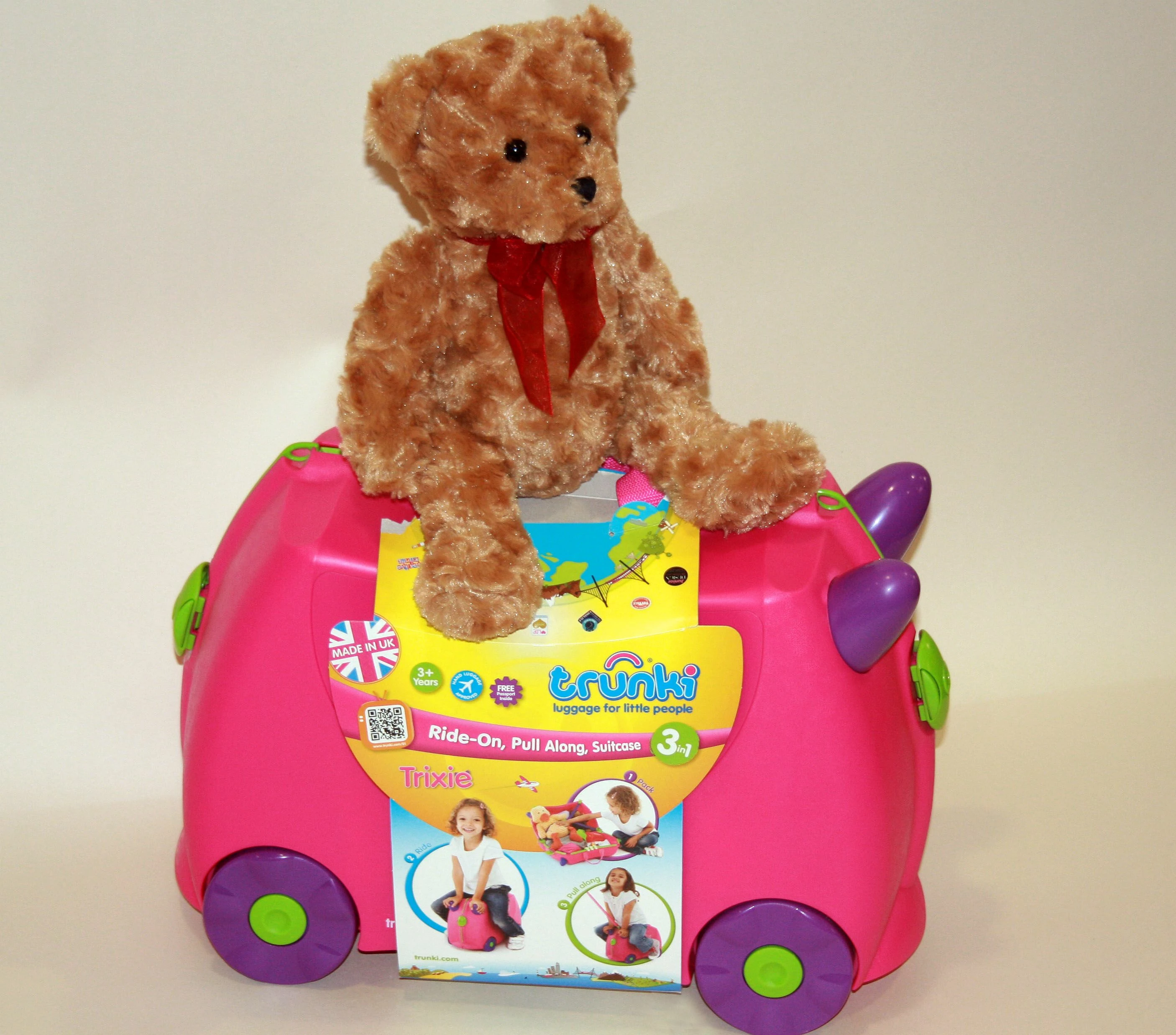
Partner Article
Getting the most from regional innovation begins with dotting the I's
When is a Trunki not a Trunki? This is a question which has been exercising minds at the Court of Appeal recently where one of Northumbria University’s favourite sons, Mr Robert Law, the Inventor of the Trunki Ride-On suitcase, had a significant set-back recently.
At a time when multi million pound investment into the areas of design and innovation is essential if the UK is to hold its own at the forefront of product design and innovation, the judgment reached could have far-reaching implications for the design industry.
So why was this recent decision so pivotal?
To recap, the Trunki range is a series of animal inspired ride on suitcases for children. The dispute concerned a look-a-like version of the Trunki called the Kiddee Case - marketed by a company called PMS International who had, the previous year, been found to infringe the Registered Designs of Mr Law’s Company, Magmatic. Mr Law had taken Registered Design protection for a number of the Trunki Ride-On suitcases he sold. The Judge in the High Court had found that four of the six Trunki designs were infringed by the Kiddee Case look-a-likes. However, PMS appealed that decision; the Court of Appeal agreed and PMS is now free to sell its competing cases.
The key issue in this situation was how a Registered Design should be viewed. Mr Law’s Registered Designs were of line monochrome pictures without any colour and without any features such as whiskers, spots or stripes. PMS had argued that to assess Registered Design Infringement one had to look at the product with its colour and features and not just the Registered Design.
That approach was rejected in the High Court but the Court of Appeal simply disagreed and said that the proper way to look at these things was to look at the whole context of the Registered Design and so it must include the surface decoration and the colour of the product as sold.
The significance of this decision is wide ranging for those people who have registered designs. Some will now have cover for what they believe is their shape but should a competitor manufacture competing products in different colours or with different features to them then this may avoid infringement.
Such a position, in my opinion, cannot be right and it simply weakens the effect of a Registered Design, allowing those who wish to trade off the back of other people’s efforts to take unfair advantage – and this is exactly what has happened to Mr Law’s Trunki designs.
The difficulty with this decision is that it throws into disarray the way that Registered Designs are classically approached. Normally one looks at the Registered Design and compares it to the product that is being sold and if the designs are the same or similar then that is declared an infringement.
The region has access to large funding programmes through the North East SME Innovation Programme, NHS Innovations North and a number of business angel investors who are queuing up to back new product development so it would be a tragedy if such essential funding was wasted on designs that have not been adequately protected.
Personally, I believe The Court of Appeal has simply got this matter wrong. I don’t think they have properly followed the House of Lords decision on the subject and more importantly, they are redefining the ambit of the Registered Design.
However, this is a very significant decision for all British designers who seek to launch new products into the market, investing, in some cases, their last penny in the attempt, only to find that their Registered Design is not fully protected.
The matter requires urgent clarification and whilst disappointing for him, I hope that Mr Laws appeals to the Supreme Court.
This was posted in Bdaily's Members' News section by Niall Head-Rapson .
Enjoy the read? Get Bdaily delivered.
Sign up to receive our daily bulletin, sent to your inbox, for free.








 A year of growth, collaboration and impact
A year of growth, collaboration and impact
 2000 reasons for North East business positivity
2000 reasons for North East business positivity
 How to make your growth strategy deliver in 2026
How to make your growth strategy deliver in 2026
 Powering a new wave of regional screen indies
Powering a new wave of regional screen indies
 A new year and a new outlook for property scene
A new year and a new outlook for property scene
 Zero per cent - but maximum brand exposure
Zero per cent - but maximum brand exposure
 We don’t talk about money stress enough
We don’t talk about money stress enough
 A year of resilience, growth and collaboration
A year of resilience, growth and collaboration
 Apprenticeships: Lower standards risk safety
Apprenticeships: Lower standards risk safety
 Keeping it reel: Creating video in an authenticity era
Keeping it reel: Creating video in an authenticity era
 Budget: Creating a more vibrant market economy
Budget: Creating a more vibrant market economy
 Celebrating excellence and community support
Celebrating excellence and community support